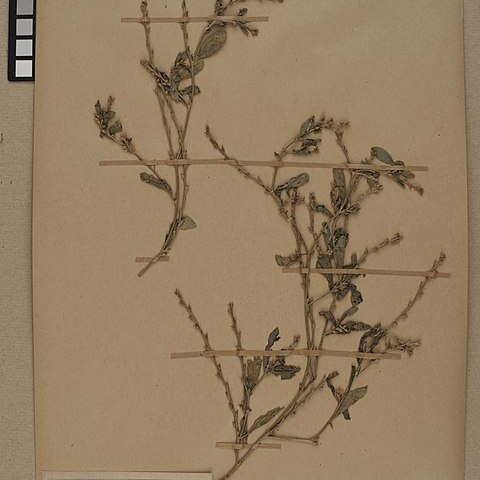Plants scabrous throughout, trichomes to 1 mm. Stems often ascending, (rigid), usually branched basally and near middle, (0.4-)1-4(-4.5) dm. Basal leaves similar to cauline. Cauline leaves petiolate [(0.2-)0.5-2(-2.5) cm] or (distal) sessile or subsessile; blade oblong, oblong-lanceolate, or elliptic, (1-)1.5-7(-9) cm × (3-)7-20(-30) mm (smaller distally), base cuneate, margins usually entire, dentate, or repand, rarely pinnatifid, apex acute or obtuse. Fruiting pedicels appressed to rachis, 0.5-1(-1.2) mm (ca. 1/2 as wide as fruit). Flowers: sepals 0.6-0.9 × 0.2-0.4 mm, sparsely pubescent; petals 0.9-1.3 × 0.1-0.2 mm, claw 0.4-0.6 mm; filaments 0.5-0.8 mm; anthers 0.1-0.2 mm. Fruits erect, 0.2-0.3 cm × 1.5-2 mm, 2-seeded; replum expanded, to 1.5 mm wide basally, narrowed to apex; style curved away from rachis, subconical, 1-1.8 mm, sparsely pubescent. Seeds 1.3-1.7 × 0.8-1.2 mm. 2n = 14.
Annual herb, erect, branching, 15–70 cm tall, hairy; hairs simple and bifid; stems angular. Leaves petiolate; lower leaves opposite, oblong-obovate to ovate, pinnatifid to dentate or entire; upper leaves alternate, oblanceolate, entire. Inflorescence an elongating raceme. Sepals 0.8 mm long, erect to spreading. Petals 1 mm long. emarginate, white. Style 1–2 mm long, persistent as a beak curving away from stem. Silicula obliquely ovoid or globular, 3 mm long, 2–2.5 mm wide, hairs white, branched; pedicels 1–2 mm long, thick, erect to appressed. Seeds 1–2 mm long, broadly elliptic.

